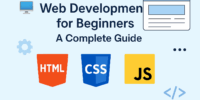🌐 Online tutoring in India has exploded over the past few years. It is evolving from a niche service into a vibrant ecosystem. It will shape education’s future. Spurred by internet penetration, affordable smartphones, supportive policy, and tech breakthroughs (like AI and analytics), this transformation has been incredibly rapid.
Whether you’re a learner, tutor, investor, or parent, understanding the trajectory of this sector is crucial. Let’s dive into what’s happening, where it’s going, and why it matters.
Top 12 Latest Educational Topics
1. Market Landscape & Growth Trajectory
India’s Online Tutoring Market
-
In 2023, India’s online tutoring services market generated USD 430 million. Further it is projected to reach nearly USD 1.875 billion by 2030. It is growing at a CAGR of 23.4% from 2024 to 2030.
-
At a broader scale, the private tutoring market (both online and offline) stood at USD 4.1 billion in 2024. It is expected to surge to USD 7.8 billion by 2033 (7.5% CAGR).
-
Likewise, AI-driven tutoring is also gaining rapid momentum. Currently it is valued at USD 66.5 million in 2024. And further it is projected to hit USD 448.9 million by 2030 with a CAGR of 37.5%.
Why such growth?
-
Tech affordances: Smartphones and broadband have democratized access.
-
Competitive exam culture: The pressure to excel in entrance exams (JEE, NEET, CUET, CLAT) fuels demand.
-
Personalized learning: One-on-one, on-demand, flexible tutoring is resonating with families.
-
Policy backing: India’s National Education Policy and investment in digital infrastructure supports hybrid and remote learning.
Top 20 Online Learning Platforms in India 2025
2. The Rise of AI-Powered Tutoring
AI isn’t futuristic—it’s today’s reality.
-
The AI tutors’ market in India grew from USD 66.5 million in 2024 to a forecasted USD 448.9 million by 2030. It is at a staggering 37.5% CAGR.
-
Globally and regionally, on-demand tutoring dominates with compounded growth. And it is expected to continue as platforms integrate Intelligent Tutoring Systems to monitor learning patterns and customize content delivery.
-
Academic research shows platforms like MindCraft and Sakshm AI (targeting rural learners and coding students, respectively) use AI to offer personalized pathways. It also gives Socratic, feedback-rich guidance, and reaching students beyond conventional classrooms.
-
Tech-first hybrid tutoring frameworks such as VTutor enable educators to monitor multiple students in real time, helping scale high-impact teaching.
Impact on Learners
-
More personalized learning experiences, adjusting pace, content, and modality to a student’s profile.
-
Automated grading and real-time guidance reduce tutor load and boost engagement.
-
Data-driven insights help students and parents track progress effectively.
3. Spotlights: New & Innovative Platforms
Alongside big names like BYJU’S, Vedantu, Unacademy, and PhysicsWallah, newer platforms are making waves:
-
MindCraft: An AI-driven mentor network for rural India. It blends learning, coaching, and community support.
-
Sakshm AI: It is designed for coding students, offering a Socratic, conversational assistant that fosters deep understanding.
-
VTutor: It Creates hybrid-class experiences with AI avatars and peer-screen monitoring to manage engagement in real time.
-
Interval Learning (Kerala): It Focuses on highly personalized tutoring for younger students, blending live one-to-one classes with gamified strategies.
-
TutorMap: It is a marketplace for tutors to reach broader students and optimize teaching operations efficiently.
At the same time, governments in states like Karnataka and Telangana are collaborating with platforms—Khan Academy, PhysicsWallah, EkStep. It is to integrate AI-based tutoring for millions in public schools.
Top Scholarships for Indian Students in 2025: Complete Guide
4. Shifting Trends in Tutoring
Key macro trends reshaping the space:
-
On-Demand Tutoring Boom
Platforms offering instant help (homework doubts, exam prep) dominate revenue share (~77%). -
AI & Intelligent Tutoring Systems
Focus is shifting from static video lectures to adaptive tools that track engagement and suggest interventions. -
Hybrid & Peer Learning Models
Systems like VTutor fuse human touch with scalability; peer mentorship keeps engagement high. -
Gamification & Soft Skills Integration
Coaching platforms increasingly blend critical thinking, communication skills, and interactive elements. -
Accessibility & Localization
Platforms offer regional language support to bridge rural/urban divides. Govt initiatives focus on digital inclusivity. -
Focus on Quality, Not Quantity
Tutor platforms now emphasize verified credentials, engagement metrics, and feedback loops, not just volume.
5. Challenges & Roadblocks
Despite potential, several obstacles remain:
-
Digital Infrastructure: Rural connectivity, hardware access, and screen size constraints still hamper learning.
-
Trust & Quality Assurance: Overcoming concerns around tutor credentials and platform efficacy.
-
Pricing Sensitivity: Keeping costs affordable without sacrificing quality—especially for low-income families.
-
Tutor Burnout & Admin Load: Tutors juggle sessions, payments, and communications—often without seamless tools.
-
Regulatory and Data Privacy: As edtech grows, protecting student data and ensuring ethical AI becomes essential.
6. Opportunities Ahead
The future is bright for those willing to innovate across dimensions:
-
Building Intelligent, Adaptive Platforms
Systems that adjust pace, format, and difficulty based on real-time learning patterns can unlock better outcomes. -
Hybrid Models at Scale
Combining human tutors, AI assistance, and peer groups yields personalized yet scalable learning—especially in resource-constrained areas. -
Deep Niche Services
Tailored platforms—like coding tutors (Sakshm AI), rural mentorship (MindCraft), kinesiology, arts—can outperform generalists in expertise and impact. -
Collaborations with Public Education
Partnerships with states (e.g., Karnataka, Telangana) offer access to underserved campuses—and credibility. -
Focus on Tutor Experience Tools
Solutions for simple scheduling, payment collection, engagement tracking, and admin automation meet a tangible need. -
Localized, Language-Aware Content
Building regionally relevant curricula and vernacular tutoring ensures deeper adoption.
How Indian Students Can Afford Higher Education Without Stress
7. Related Topics to Explore
These cross-cutting topics can enrich any related conversation:
-
MOOCs & SWAYAM: Part of India’s digital education mission, now using MOOCs alongside tutoring platforms.
-
VR/AR for Education: Immersive learning (e.g., remote virtual labs) is gaining momentum.
-
Soft Skill & Mentorship Programs: Tutoring expanding into leadership, communication, and emotional intelligence.
-
EdTech Policy Frameworks: Regulatory guidelines around data privacy, platform standards, and teacher certification.
-
Tutor Training & Certification: Formal systems to ensure pedagogy quality and standardization.
-
Research in EdTech: Academic literature (MindCraft, Sakshm AI, VTutor) offers insights into efficacy and design of tech-led tutoring.
Conclusion: -The Future of Online Tutoring in India: Spotlight on Fresh Platforms
India is entering a golden era for online tutoring. Multiple growth drivers that are rising market size. So, AI innovation, government collaboration, and evolving learner needs—are converging. The future won’t just be about lessons delivered on screens. It will be about personalized, adaptive, mentor-led ecosystems accessible across geographies.
For learners: There’s access like never before.
For tutors: There’s potential to reach more students professionally.
For entrepreneurs: Opportunities await in niche platforms, AI tools, and tutor-centric services.
For policymakers: Partnerships with edtech can deliver inclusive, scalable education.
[wpforms id=”1648″]





